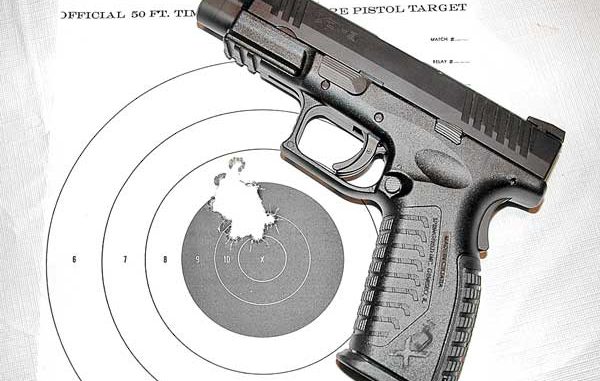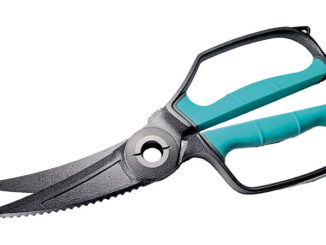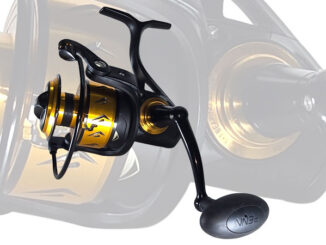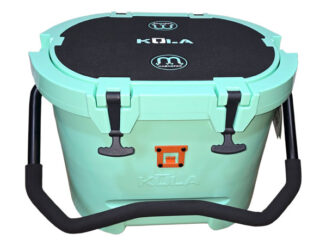
This time of year, floating saltwater baits rather than retrieving them offers practical and strategic benefits.
Springfield Armory, famous for high-end 1911-style pistols, introduced a new model polymer pistol in 2001 that so completely overshadowed its production of those models, the company image was taken over by the new pistol. Suddenly, the company was identified by its XD design rather than its long-admired 1911s.
Innovative in ergonomics and design, the XD offered a plethora of standard features. A striker-fired pistol, if the striker was cocked, it could easily be determined by looking at (or rubbing one’s thumb over) the rear of the slide, and looking or feeling for the protruding end of the striker.
A loaded chamber indicator on the top of the slide would stick up, easily seen or felt if a bullet rested in the chamber.
Like the 1911, the XD had a compression safety built into the grip that would not allow the gun to fire unless it was gripped firmly.
In addition, the trigger system incorporated a Glock-like safety that kept the trigger locked until direct rearward pressure was applied.
The pistol also featured double-slot accessory rails on the front under the muzzle for the nowadays practically required ability to attach various accessories such as flashlights.
It didn’t take long for this well-designed model to begin showing up in greater and greater numbers in my concealed handgun classes. Priced competitively, the XD offered a lot of gun for the money and it shot well. The design of the magazines and grips also offered carry of a larger number of rounds than was usually found in similar-sized polymer-frame pistols.
Ergonomically, when you picked one up and raised it to eye level, the grip design naturally gave you an instant sighting plane through the rear sights, looking at the front sight. The angle of the grip ensured you would be looking straight down the top of the slide.
The new design of pistols was recognized for its innovative features as the American Rifleman 2003 Pistol of the Year. The .45 ACP version was recognized in 2006 as the American Rifleman Handgun of the year. That same year, the same pistol and caliber were awarded Handgun of the Year by the Shooting Industry Academy of Excellence.
That was then. This is now.
Pat Blake, a friend and gun dealer, offered me his new XDm new in the box. He said I simply had to try this new model of the XD.
Never hard to convince when someone wants me to try out a handgun, I agreed to take his 9X19MM version and give it a going over on the range.
I knew the “m” stood for “match” — as in barrel for the new model. Springfield was putting match-grade hammer-forged barrels on the XDm. This would be my chance to find out if the new barrels were hype or heresy.
I had fired the XD numerous times as students offered them, but had never shot more than a magazine or two at one session. I was impressed with the pointing capability, one of the highly-touted new features that did seem to be true. When you lifted the gun up to eye level, it naturally gave you near perfect sight picture.
I was to discover the “m” model was improved in a lot of ways besides simply adding a match barrel.
The grip has been modified with indentions to allow easier access to the ambidextrous magazine release. The grip angle and thinner contour through the upper portion allows for more control and a firmer grip.
In addition, every “m” model comes with three different sets of backstraps for the grip, tailoring the grip to any size hand and offering a custom fit.
There is a minimum reset trigger, which the company claims has a shorter travel than any currently available polymer pistol. This of course makes for faster, more accurate follow-up shots.
So how did it shoot?
The gun just feels good when you pick it up. The company claims the ergonomics of the grip system enhance your control of the weapon and help you shoot better. It is said the grip “grips” the shooter — and it is one of the best-feeling handgun grips I have handled.
I ran a couple of hundred rounds of different 9MM ball ammo through this new, dry gun. Ball is not really a fair test, since it feeds easily through most anything, but the gun never hiccupped once. There were no failures to feed, extract or eject in all the rounds from each of the magazines supplied with the gun.
I tried rapid-fire on a standard B-27 target from five yards, and the groups I shot into the midsection were boringly tight and consistent. Obviously the gun lent itself to panic point-and-shoot.
I then hung NRA 50-Foot Slow Fire Pistol targets with 3.25-inch bullseyes at 15 yards, and tried two-handed, unsupported fire.
A magazine-full of 19 rounds sent 17 through the bull, one on the edge and one round a half-inch out of the bull. I was pleased with my shooting, and the performance, but it didn’t tell me anything about the accuracy, so I locked down at the same distance with a two-handed hold over a sandbag.
I can’t see well-enough any more to make a fair test at 25 yards, but I can surely pick up a crisp sight picture of both the sights and the bullseye at 15 yards, and I shot several targets that ate 2-inch ragged holes in the bullseye. Obviously the match barrel isn’t just hype.
The gun is reasonably priced in the $550-$600 range, and this includes a hard case, two magazines with 19+1 capacity (16+1 in .40 S&W, and 13+1 in the .45 ACP-compact versions carry fewer rounds).
The case also contains two grip backstraps in addition to the one on the gun, a hard-plastic belt holster, magazine loader, magazine belt carrier and, of course, the necessary added expense of the ubiquitous Clinton cable gun lock.
The pistol is offered in 9X19MM, .357 SIG, .40 S&W, .45 ACP and .45 GAP. With that selection of calibers, and the accessories offered in the pack, it would be an excellent buy at a much higher price.
For more information, log on to www.springfield-armory.com/xd.php.
Read more guns, shooting and politics at Hutchinson’s blog: www.theshootist.net.
Hutchinson’s newest book, written with Todd Masson, is The Great New Orleans Gun Grab, a searing expose’ of the scandal of gun confiscations in New Orleans in the aftermath of Hurricane Katrina. It is available online at www.neworleansgungrab.com.
The Quest and the Quarry, Hutchinson’s novel, is a coming-of-age tale of a line of trophy bucks and the youth of a Mississippi farm family that hunts them. It is available at www.thequestandthequarry.com.
Both books have been chosen Outdoor Books of the Year by the Southeastern Outdoor Press Association, and are available from the publisher at (800) 538-4355.


